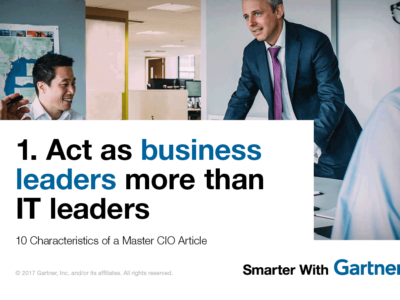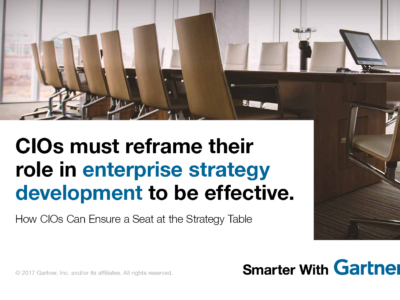Lessons from Netflix, DHL, GM and Unilever on how to lead digitalization and disruptive innovation.
Many CIOs are familiar with how Netflix changed the movie industry by offering a digital option for renting media. Other companies are experimenting with blockchain and wearables to transform their business models. With four of 10 CIOs leading their enterprises’ digitalization efforts, according to the 2016 Gartner CIO Survey, CIOs need to lead disruptive innovation and look outside of traditional investments for faster company growth and deeper business model change.
“CIOs need to transform themselves into venture CIOs to spearhead disruptive innovation efforts in the enterprise, manage venture capital technology investments and drive successful techquisitions,” said Ansgar Schulte, research director.
Build a Center of Excellence for innovation
Some companies, such as Netflix, were able to disrupt their industries through truly game-changing innovation as opposed to more traditional, incremental innovation. Disruptive innovation is a high-risk approach that radically changes the rules of competition in a product or service category, a market, an ecosystem or an entire industry. Venture CIOs utilize fast-fail experimentation to explore disruptive ideas and ascertain their value as well as potential issues, versus a more cautious approach of collecting and analyzing all the information about what customers need or want.
As a long-term goal, venture CIOs should create an Innovation Center of Excellence (CoE) in the company as a single place to test innovations and maximize the relative resources. For example, DHL, the global logistics, mail delivery and communications services provider, operates two CoEs that focus on automotive innovations such as electric vehicles and green logistics and on smart mobility to test unmanned aerial parcel delivery.
Look to innovative startups
While a CoE enables companies to build innovative capabilities in-house, this may not be sufficient for rapid digital business transformation. In the short term, venture CIOs should look to invest in or partner with innovative startups using corporate venture capital.
Read more: 4 Reasons to Consider a Techquisition
Focus on two types of venture capital investments. One type, called “Enabling” investments, increases the demand or expands the market for the investor’s own products and services. An example is Intel’s venture capital investments in video and audio software development firms that built systems requiring more powerful Intel chips. “Emergent” investments instead explore new, future opportunities not currently part of the investor’s business strategy by leveraging related products or services. For example, General Motors invested $500 million in the online car- and- ride sharing company Lyft to investigate mobility services. Venture CIOs must support their business in deciding whether to be the sole investor or to co-invest, if the company should acquire minority or equal stakes, and at what stage of the startup’s life cycle to invest.
To mitigate venture capital investment-related risks, some companies establish accelerators and/or incubators for startups. Unilever for example, one of the world’s leading multinational consumer goods manufacturers, operates a corporate venture capital fund (Unilever Ventures) to invest in businesses with advanced technologies as well as a startup incubator (Unilever Foundry), which provides services and resources to select startups.
Get Smarter
Client Research
Clients can learn more about why CIOs need to become venture CIOs in the full report The Digital Economy Requires Venture CIOs.
Leadership eBook
Learn how to lead through digital disruption. Download the complimentary CIO Leadership eBook.
Gartner Symposium/ITxpo 2017
Learn more about CIO leadership and how to drive digital innovation to the core of your business at Gartner Symposium/ITxpo 2017. Follow news and updates from the events on Twitter using #GartnerSYM.










